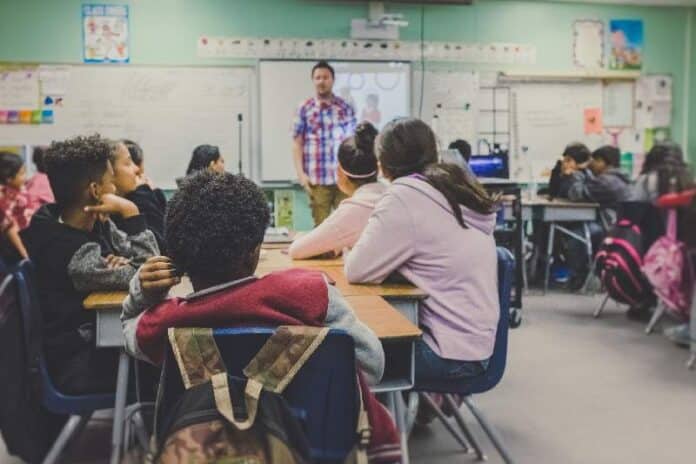
As a teacher, you have the incredible responsibility and privilege of helping your students learn in new and exciting ways. But with so much to cover in such a limited time frame, it can be tempting to stick to what is comfortable or familiar.
However, creating an enjoyable learning atmosphere where your students thrive requires more than just memorizing facts- it requires making learning interesting!
By following these 4 steps, you’ll quickly see how easy and rewarding creating an interactive classroom experience can be for both teachers and students alike.
https://unsplash.com/photos/man-and-woman-sitting-on-chairs-zFSo6bnZJTw
Incorporate engaging activities into the classroom
When it comes to learning, sitting at a desk and reading a textbook for hours on end can become monotonous and tiresome. That’s where the magic of incorporating engaging activities into the classroom comes in.
Imagine the excitement of stepping into a different persona for a moment and immersing yourself in a role-playing scenario, where you can react to a situation in a completely new and creative way. Or picture the joy of breaking free from the confines of four walls and embarking on an exciting outdoor field trip, where learning unfolds amidst the beauty of nature.
These types of interactive and hands-on activities not only provide a refreshing change of pace but also have the power to significantly increase retention and understanding of the material being taught. By actively participating in these dynamic learning experiences, students are able to make meaningful connections, explore different perspectives, and apply their knowledge in real-world contexts.
So, why not infuse your classroom with something new, exciting, and fun? Embrace the power of experiential learning and watch as your students’ enthusiasm and engagement soar. Your classroom will become a vibrant hub of exploration and discovery, and your students will thank you for creating an environment where learning truly comes alive!
Utilize technology – online resources, videos, or podcasts
Technology has revolutionized the way we learn and communicate. With so many online educational resources for teachers available, it’s easier than ever to explore new topics and expand our knowledge. From podcasts to videos, these tools provide an engaging and interactive way to learn about a wide range of subjects.
Whether you’re a student, professional, or lifelong learner, there’s something out there for everyone. So why not utilize technology to your advantage and take advantage of these valuable resources? With just a few clicks, you can dive into a world of knowledge and discover new ideas that can challenge and inspire you.
Ask questions that require critical thinking
As educators, it’s important to encourage our students to think critically and outside the box when it comes to problem-solving. This means asking questions that go beyond just regurgitating information from textbooks but instead challenging them to think deeply and creatively.
Questions like, “What other solutions could we consider besides the ones we have already tried?” or “What assumptions are we making that could be limiting our thinking?” can open up a world of possibilities and unlock innovative solutions to even the most daunting problems. By fostering a culture of critical thinking in our classrooms, we can empower our students to become the problem-solvers and change-makers of the future.
Introduce different activities or projects
Student motivation and engagement are essential elements to ensure quality education. Teachers must find ways to keep their students interested and invested in learning. One option is to incorporate activities that spark creativity and imagination. For example, students could work in groups and come up with short skits related to the lesson.
Additionally, hands-on projects such as creating a display board, conducting surveys, or creating instructional games can make learning more engaging. Another way to motivate students is to provide them with real-world problems to solve. This approach not only gives them a sense of accomplishment but also prepares them for future careers.
Overall, teachers must be creative and flexible to find the right combination of activities and projects to keep their students motivated and engaged.

Encourage critical thinking skills by asking questions that require thoughtful responses as well as encouraging out-of-the-box thinking. Last but not least, keep your enthusiasm for learning alive in all that you do! Show your passion for history, science, or mathematics — whatever area you teach in — as this will give others the motivation they need to learn more about the subject. Teaching should be fun, exciting, and educational – why not work together to make it happen?





